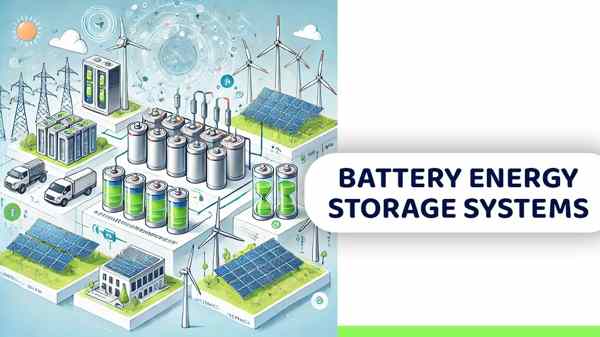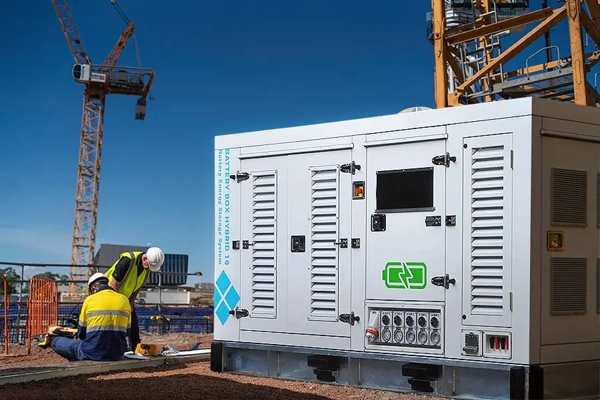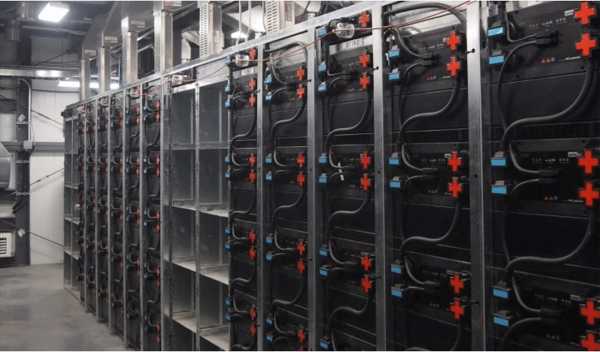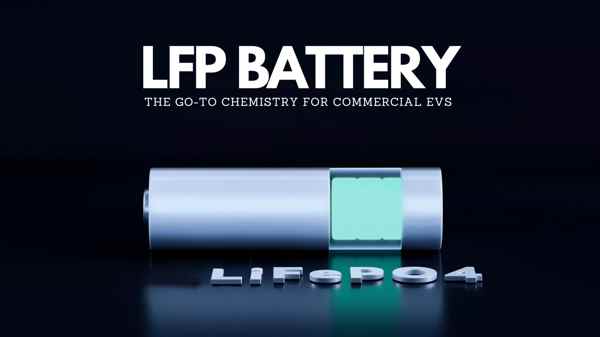Bess genera elettricità?
Mentre esplori il mondo dell'energia solare e dell'indipendenza energetica, Sentirai costantemente l'acronimo "Bess." È un componente chiave nei moderni sistemi energetici, Ma spesso sorge una domanda fondamentale: In realtà fa un Bess generare la sua stessa elettricità? Chiariamo il suo ruolo vero e potente.
La semplice risposta è no, un Bess (Sistema di accumulo dell'energia della batteria) non genera elettricità. Invece, È progettato per archiviare l'elettricità che è stata generata da un'altra fonte, come i tuoi pannelli solari o la griglia pubblica. Pensalo come una "banca energetica": fai depositi quando l'energia è abbondante ed economica, E fai prelievi quando ne hai più bisogno.

A Gycx solare, Vediamo un Bess come il cuore di un moderno sistema energetico, il componente che ti dà il controllo sulla tua potenza. Capire che si tratta di un dispositivo di archiviazione, non un generatore, è il primo passo per apprezzare il suo incredibile valore. Esploriamo di più su questi sistemi.
Cos'è un negozio di energia Bess?
COSÌ, Se un Bess è un "Energy Store," Cosa significa effettivamente questo? Quali componenti sono dentro, E come lavorano insieme per tenere e fornire energia per la tua casa o per la tua attività?
UN Bess Energy Store è completo, intelligente, e sistema integrato progettato per archiviare e inviare in sicurezza l'energia elettrica. È molto più di una semplice batteria. Un Bess è composto da diversi componenti chiave che lavorano in armonia:
- Moduli della batteria: Le unità fondamentali che immagazzinano fisicamente l'energia (in genere utilizzando chimica degli ioni di litio LFP).
- Sistema di gestione della batteria (BMS): Il cervello elettronico che protegge e monitora le batterie per garantire sicurezza e longevità.
- Sistema di conversione di potenza (PC): Un sofisticato inverter che converte la potenza DC dalle batterie in alimentazione CA per l'uso, e viceversa per la ricarica.
- Sistema di controllo: Il software che gestisce l'intero processo, decidere quando caricare o scaricare in base alle impostazioni, produzione solare, e stato della griglia.

Immergersi più in profondità: L'anatomia di una banca energetica
Pensa a un Bess come a un team ad alta tecnologia in cui ogni membro ha un ruolo cruciale. IL moduli batteria sono il serbatoio. IL BMS è il direttore della sicurezza, Controllando costantemente i segni vitali delle batterie (voltaggio, temperatura, attuale) e proteggendoli dallo stress. IL PC (inverter) è il traduttore multilingue e il gateway, Convertire il potere tra il mondo DC di batterie e pannelli solari e il mondo AC degli elettrodomestici della tua casa. Finalmente, IL Sistema di controllo è il capitano della squadra, Esecuzione della tua strategia energetica, sia che si stia memorizzando un'energia solare in eccesso sotto il NEM della Malesia (Misurazione netta di energia) programma da utilizzare di notte, o fornire un potere di backup istantaneo nel momento in cui un temporale provoca un blackout. Tutti questi componenti sono progettati per lavorare insieme perfettamente, Spesso ospitato in un'elegante unità montata a parete o in un armadio a portata di lavoro professionale. A Gycx Solar, Quando installiamo un stoccaggio di energia della batteria Bess soluzione, Stiamo offrendo tutto questo, team coordinato per gestire la tua energia.
Qual è il mantenimento di Bess?
Quando pensi ai sistemi di alimentazione, Potresti pensare a generatori rumorosi che richiedono ricariche di carburante costanti e manutenzione grassa. Che tipo di manutenzione1 fa un moderno, High tech BESS2 richiedere?
Uno dei vantaggi più significativi di un moderno Bess agli ioni di litio è che è praticamente Senza manutenzione. Perché non ha parti in movimento ed è completamente sigillato, Sistema a stato solido, Non c'è carburante per ricaricare, nessun olio da cambiare, e non sono richiesti test motori regolari. La "manutenzione principale"" è semplicemente quello di mantenere pulito l'esterno dell'unità e garantire che le sue porte di ventilazione rimangano senza ostacoli.

Immergersi più in profondità: Il "impostalo e dimenticalo" Vantaggio
La natura a bassa manutenzione di un BESS è un importante punto di forza per i proprietari di case e le imprese. Ecco cosa "manutenzione" Sembra in pratica:
- Responsabilità dell'utente (Minimo):
- Mantienilo pulito: Occasionalmente pulire verso il basso l'esterno del recinto di bess con un panno asciutto per prevenire l'accumulo di polvere.
- Garantire l'autorizzazione: Assicurati che i mobili, scatole, o altri elementi non vengono posizionati in modo da bloccare le prese d'aria dell'unità. Il flusso d'aria adeguato è essenziale per il raffreddamento, soprattutto in un clima caldo come quello della Malesia.
- Sistema di auto-manutenzione:
- L'integrato BMS è il vero tecnico di manutenzione. Funziona 24/7, Monitoraggio automatico della salute di tutte le celle della batteria, bilanciando la loro carica, e garantire che tutto funzioni entro parametri ottimali.
- Il software del sistema ti avviserà (spesso tramite un'app per smartphone) o il tuo programma di installazione se rileva anomalie che richiedono attenzione.
- Controlli professionali:
- Sebbene non rigorosamente richiesto su base frequente, È una buona pratica avere un installatore professionista come Gycx Solar eseguire un controllo di sistema ogni pochi anni. Durante questo, Possiamo ispezionare i collegamenti elettrici, Pulisci eventuali filtri del ventilatore, e installare eventuali aggiornamenti del firmware disponibili per garantire che il sistema continui a funzionare al massimo delle prestazioni.
Rispetto alla costante manutenzione di un generatore, La manutenzione di un Bess è piacevolmente semplice e mani-off.
Che aspetto ha un bess?
Quando immagini un "sistema di accumulo di energia della batteria," Cosa immagini? Una pila di batterie per auto industriali in un angolo? La realtà del moderno Bess è molto più elegante e compatta.
Un moderno Bess per una casa o una piccola impresa si presenta in genere in uno dei due fattori di forma principale:
- UN Bess a parete: Sembra un elegante, Appliance moderno. È un singolo, Unità autonoma che è montata verticalmente su un muro, di dimensioni simili a un piccolo armadio o una moderna caldaia.
- UN Bess-montaggio: Questo consiste in diversi modulari, Unità batteria rettangolare (spesso chiamati "batterie a rack") che sono ben installati o "impilati" in un rack o un armadio professionale di attrezzature per pavimenti.

Immergersi più in profondità: La forma segue la funzione
I due progetti principali soddisfano le diverse esigenze, Ecco perché noi di Gycx Solar offriamo entrambi i tipi di soluzioni:
- Sistemi montati a parete:
- Aspetto: Sono progettati pensando all'estetica, Offrendo un pulito, Look minimalista che si integra bene nel garage di una casa moderna, ripostiglio, o anche all'aperto.
- Meglio per: Salva spazio sul pavimento, Il che è un enorme vantaggio in molte case malesi. Sono ideali per le esigenze di capacità standard (Tipicamente da 5kWh a 15kWh per unità).
- Sistemi montati a rack:
- Aspetto: Hanno un più funzionale, Look high-tech e sono alloggiati in un mobile simile a quelli usati per IT Server.
- Meglio per: Scalabilità e alta capacità. È molto facile aggiungere più moduli al rack per aumentare la memoria totale. Questa è la soluzione preferita per case più grandi con elevate esigenze energetiche o per applicazioni commerciali.
- Sistemi su scala di utilità:
- Alla scala più ampia, Bess sembra i container di spedizioni. Queste enormi unità containerizzate ospitano centinaia di rack a batterie e vengono utilizzate dalle compagnie elettriche per stabilizzare l'intera griglia. Questo mostra solo quanto sia scalabile la tecnologia principale!
Non importa il fattore di forma, Un Bess installato professionalmente è un pulito, organizzato, e sistema autonomo.
Quale batteria viene utilizzata in un sistema BESS?
Cosa c'è effettivamente dentro la scatola? Qual è la tecnologia della batteria principale che alimenta questi moderni sistemi di accumulo di energia? La scelta della chimica della batteria è il fattore più importante per la sicurezza, longevità, e prestazioni di un bess.
La stragrande maggioranza del moderno BESS per uso residenziale e commerciale è alimentata da Fosfato di ferro al litio (LFP o Lifepo₄) batterie. Questo tipo specifico di batteria agli ioni di litio è diventato lo standard del settore per lo stoccaggio stazionario perché offre la migliore combinazione di sicurezza, durata del ciclo molto lungo, e eccellente stabilità termica, rendendolo di gran lunga superiore alle più antiche batterie al piombo-acido o ad altri tipi di ioni di litio.

Immergersi più in profondità: Perché LFP è la scelta del professionista
A Gycx Solar, Il nostro impegno per la sicurezza dei nostri clienti e il valore a lungo termine è il motivo per cui utilizziamo esclusivamente la tecnologia LFP nelle nostre soluzioni BESS. Ecco perché è la scelta giusta:
- Sicurezza superiore: LFP è il più sicuro e chimicamente stabile di tutti i comuni chimici degli ioni di litio. Ha una soglia di fuga termica molto alta, Significa che è estremamente resistente al surriscaldamento e al cattura del fuoco. Questa è una caratteristica non negoziabile per un grande sistema di batterie installato in casa, Soprattutto in un clima caldo.
- Longevità eccezionale: Le batterie LFP sono cavalli da lavoro costruiti per l'uso quotidiano. Possono consegnare 3,000 A 6,000+ Cicli di scarica di carica profondi, che si traduce in una durata di servizio di 10 A 20 anni in una tipica applicazione solare.
- Durata e prestazioni: LFP è una chimica solida che si comporta bene in un intervallo di temperatura ragionevole e non contiene cobalto, Un minerale di conflitto con preoccupazioni di approvvigionamento etico e volatilità dei prezzi.
- Le alternative:
- Acido di piombo: La tecnologia più vecchia. È pesante, ha una durata molto più breve (3-7 anni), è meno efficiente, e richiede manutenzione (se allagato).
- NMC (Cobalto nichel manganese): Un altro tipo di ione di litio, Spesso si trova nei veicoli elettrici e negli utensili elettrici in cui il suo peso più leggero è un vantaggio. Tuttavia, Ha una stabilità termica inferiore e una durata del ciclo più breve di LFP, rendendolo meno ideale per lo stoccaggio domestico stazionario.
Gycx Solar Story: "Spesso spieghiamo ai clienti in Malesia che la tolleranza ad alta temperatura di LFP è un grande vantaggio qui. Mentre tutte le batterie preferiscono essere cool, La stabilità intrinseca di LFP gli conferisce un ulteriore margine di sicurezza e durata nel nostro clima tropicale, Ecco perché è l'unica chimica di cui ci fidiamo per le nostre installazioni domestiche e aziendali."
COSÌ, Cos'è un Bess? È completo, Sistema intelligente che memorizza in modo sicuro l'energia da utilizzare quando lo desideri. Praticamente senza manutenzione, una durata di oltre un decennio, E un aspetto elegante, Un moderno LFP BESS è una potente aggiunta a qualsiasi casa o azienda in cerca di sicurezza energetica e risparmi.
Se sei interessato a saperne di più su come a stoccaggio di energia della batteria Bess La soluzione può essere adattata alle tue esigenze, Il nostro team di esperti di Gycx Solar è qui per guidarti. Contattaci oggi per una consulenza professionale!
